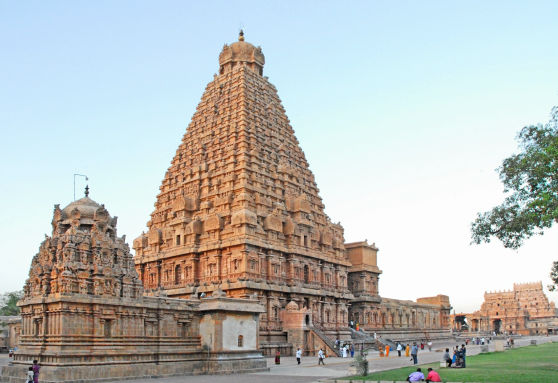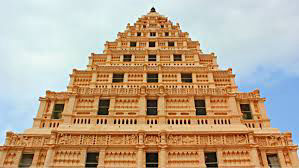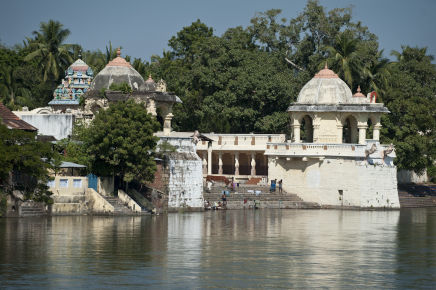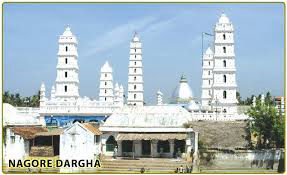
BRIHADEESWARAR TEMPLE
At a distance of 2 km from Thanjavur Junction Railway Station & 5 km from New Bus Station, the Brihadeeswarar Temple, also known as Peruvudaiyar Kovil or Periya Kovil is a brilliant example of the major heights achieved by Cholas in temple architecture.
It was built in the year 1010 AD by the mighty Chola Emperor Raja Raja Chola I. It remains as one of the greatest glories of Indian architecture and also one of the best places to visit in Thanjavur.
The temple is part of the UNESCO World Heritage Site known as 'Great Living Chola Temples'.
Also known as The Big Temple, Brihadeeswarar temple, dedicated to Lord Shiva, is famous for its grandeur and beautiful sculptures.
The temple consists of an entrance tower followed by the main temple complex spread on a plot of 33,000 sq. ft. The inner part of the temple starts with a large Nandi mandapa which is a 12 foot tall monolithic idol with intricately carved Nandi Mandapa.
The main shrine of Brihadeeswarar boasts an amazing structure with a large mandapa followed by an antarala and the sanctum.
The 13-tier tower over the sanctum is the prime attraction of the temple which is 216 feet in height built in Dravidian style. The vimana boasts a massive which weighs 80 ton.
It is said that a 2 km long ramp was built to carry the Sikhara and place it on the peak. The shadow of Sikhara never falls on the ground.



